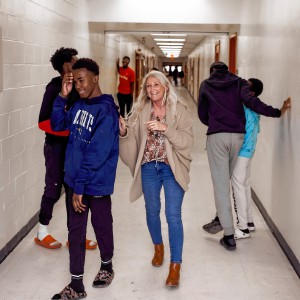Opinion: Making the belonging case for diversity

“This was the real “Aha!” moment of the research process,” writes Bennett, “because that sense of belonging is exactly what I was reading about in the education literature that indicated improved outcomes for students of color who have even one single teacher of the same race or ethnic background during their school careers.” Courtesy
| Published: 04-10-2024 6:00 AM |
Dr. Jacob A. Bennett lives in Chester.
Last year I conducted research into the meaning and value of diversity in education contexts, a project that resulted in the publication of “The Belonging Case for Diversity,” a focused literature review that I hand-delivered to the NH State Board of Education last fall.
One of my goals in “The Belonging Case” was to review and present empirical studies focused on the impacts of diversity among students and educators, but also, first and foremost, to grapple with and come to a clear and practical understanding of what diversity means.
To begin with, I sought to understand the legal case for diversity, so I turned to the backbone of the historical and legal concept of diversity in American life: the 14th Amendment to the U.S. Constitution. Records on the debate and drafting of the 14th Amendment make clear that the authors were concerned that the Constitution should protect the rights of all people to have access to necessary public goods like free schools and open markets, which cultivate and sustain a democratic society and its individual members.
I then considered the business case for diversity, which includes significant findings among top-earning corporations that higher rates of diversity within a firm correlate to increased innovation, efficiency, and profitability. These findings run alongside studies in the education literature that show correlation between increased diversity and student outcomes. However, there are also findings from a series of studies that indicate younger professionals and graduate students, particularly those from underrepresented groups, find this instrumental approach to diversity to be alienating. Rather than helping them feel like they belonged, the corporate argument had the opposite effect.
This was the real “Aha!” moment of the research process because that sense of belonging is exactly what I was reading about in the education literature that indicated improved outcomes for students of color who have even one single teacher of the same race or ethnic background during their school careers. And it was exactly what I was reading about when I was scouring debates about the necessity of equal protection and due process, which promote and enforce the right of public accommodation or the legal right to enter a business open to the public. In other words, diversity is the opposite of those signs that used to say, “No Blacks, No Irish.” Diversity is a sign that says, “All welcome!”
A proper understanding of diversity, then, is rooted in the constitutional right to be in and move around within our society, and this right is nothing short of a right to belong.
With that in mind, it is vital to highlight the folly of the Board of Education’s proposal to remove mentions of “diversity” from Ed 306.06, or the Culture and Climate section of the regulations guiding education policymaking in the state’s public schools. It is a mistake to assume that the purpose and scope of a mandated “acknowledgment of diversity and respect for differences” can be collapsed into mere “respect for differences” and not suffer tremendous loss of legal leverage to enact programs benefiting underrepresented and/or disproportionately impacted groups. Even the addition of language around “equitable opportunities” falls well short as a tool for educators and policymakers to rely on, especially compared to the compelling state interest that grounds diversity work.
Article continues after...
Yesterday's Most Read Articles
 Hometown Heroes: Couple’s sunflower fields in Concord reconnects the community to farming
Hometown Heroes: Couple’s sunflower fields in Concord reconnects the community to farming
 Boscawen resident takes issue with proposed town flag designs
Boscawen resident takes issue with proposed town flag designs
 Skepticism turns to enthusiasm: Concord Police welcome new social worker
Skepticism turns to enthusiasm: Concord Police welcome new social worker
 With new plan for multi-language learners, Concord School District shifts support for New American students
With new plan for multi-language learners, Concord School District shifts support for New American students
 With Concord down to one movie theater, is there a future to cinema-going?
With Concord down to one movie theater, is there a future to cinema-going?
 Opinion: The Concord School Board can restore trust with residents
Opinion: The Concord School Board can restore trust with residents
The principles of equal protection and due process were designed to nurture diversity, specifically, and in practical use require more than “respect for differences.” Deleting “diversity” from the existing language in Ed 306.06 cannot be understood as a mere editorial decision but a fundamental shift away from requiring affirmative policy and toward allowing passive “respect for differences.” Keep in mind, segregated school populations may learn respect for racial differences, even if from afar, but it is unlikely that they would learn as easily the meaning and value of diversity, which is shaped and urged by a fundamental human need to feel that sense of belonging, that belief that our communities are not the same without us, and we are not the same without them.
Diversity means belonging, and diversity belongs in the 306s.


 Opinion: No, Republicans are not better on the economy
Opinion: No, Republicans are not better on the economy Opinion: Campus chaos and America’s character
Opinion: Campus chaos and America’s character Opinion: Learning from landscapes
Opinion: Learning from landscapes Opinion: Summer camp registration: The only thing higher than the price is the anxiety
Opinion: Summer camp registration: The only thing higher than the price is the anxiety
